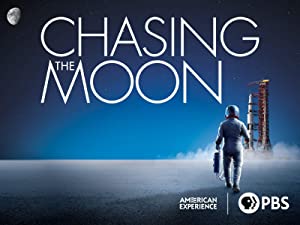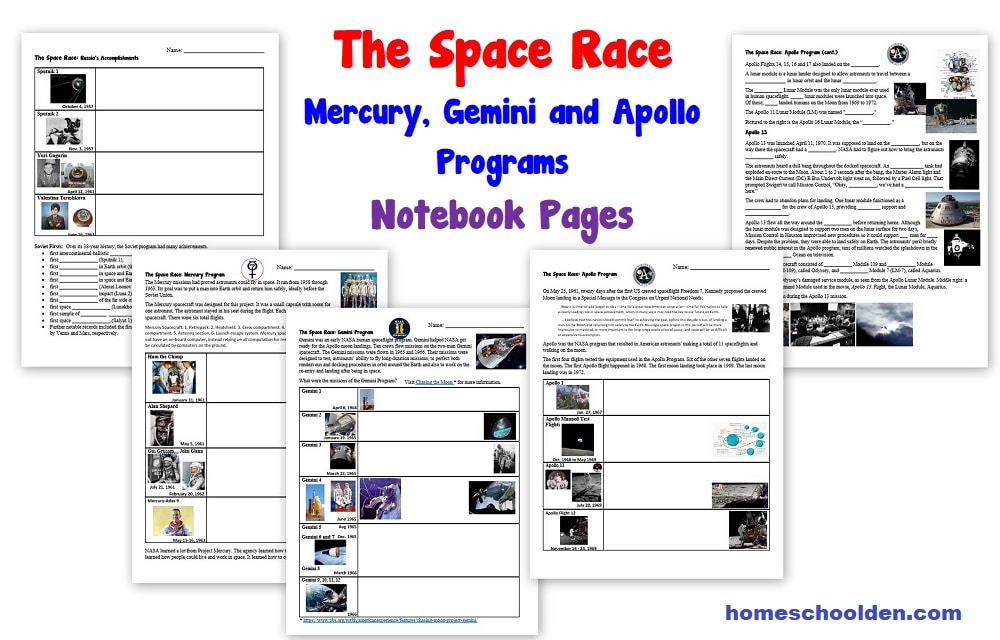Astronomy Packet (Currently Free)
The Astronomy Packet is Currently FREE!
For the past couple of weeks, we have been doing an astronomy unit. Today I wanted to share a few of the resources we used for this unit including some new astronomy notebook pages I made for the kids. These include astronomy worksheets about
- the universe and galaxies & light time (light second, minute, hour, day and of course light year)
- the Space Race and the Mercury, Gemini & Apollo Programs
- a couple of pages on the Space Shuttle Program
- the Sun, Planetary Orbits & Smaller Objects in our Solar System
which are currently FREE! Plus, I also embedded the astronomy videos we watched.
You will find the link down below to download our Astronomy Packet down below – look for the red “Add to Cart” button.

If you have younger kids, be sure to visit this post Where we Live Activity Packet — My galaxy, solar system, planet, continent, country, state, town, and home! as well as this post about our solar system activities and our free Solar System Packet.
For our current astronomy unit, we watched a number of documentaries and NASA videos.

This 3-part series begins in roughly 1957 as the U.S. struggles to catch up to the Soviet Union. Russia had so many firsts in astronomy…
- first satellite (Sputnik 1),
- first animal in Earth orbit (the dog Laika on Sputnik 2),
- first human in space and Earth orbit (Yuri Gagarin on Vostok 1),
- first woman in space and Earth orbit (Valentina Tereshkova on Vostok 6)
- first spacewalk (Alexei Leonov on Voskhod 2) and many more!!
The second part of Chasing the Moon covers the period from 1964-1968 as the U.S. sends of the first Apollo missions. And the final part shows how the U.S. made it to the Moon and back. My kids ♥loved♥ this documentary. It’s well done and they learned a lot of history about the space race/space program.
Space Race Worksheets
To go along with what we learned about the Mercury, Gemini and Apollo Programs (in Chasing the Moon), I made some notebook pages:
The Universe and Galaxies Worksheets:
We also began talking about the universe and galaxies. How many galaxies are there? How far away are there? What is a light minute/hour/year… how far would you travel in a light minute or light year?
 Astronomy Textbook (for Middle School)
Astronomy Textbook (for Middle School)

With all the recent developments due to the Hubble Telescope, I wanted to talk about some of the new discoveries. I created some worksheets (currently free below) about the universe and galaxies. I also picked out some NASA (and other) videos to watch as well and you will find those embedded below. These go (in part) with the worksheets that I made for my kids.
Space Shuttle Program Worksheets:
We also talked briefly about the Space Shuttle program as well. You’ll find a few pages after the notebook pages on the Mercury, Gemini and Apollo Programs.
The Space Shuttle Program Worksheets
Astronomy Worksheets
There is also a small packet on the Sun, planetary orbits (elliptical orbits), asteroids & comets. These notebook pages talk about the layers of the sun, the Sun’s atmosphere, elliptical orbits as well as some of the smaller objects in our solar systems such as asteroids, regolith and comets.
These Astronomy Worksheet Packets are currently free. You will be able to download all three astronomy PDFs – these and the another set I made about the Sun and planetary orbits. They will be delivered to you via SendOwl (and automatic system that I use). If you have any questions, you can email me here. ~Liesl
Download these by clicking on the “Add to Cart” button. These notebook pages will be delivered by SendOwl, the automatic delivery service I use.
Note: The email you get might say thank you for ordering from us (or something similar), but of course these are free!
This is a zipped file because there are 3 PDFs (1) Astronomy: The Universe and Galaxies; 2) Astronomy: The Space Race – Mercury, Gemini, Apollo Programs and the Space Shuttle Program 3) Astronomy Worksheets: The Sun, Planetary Orbits & Smaller Objects in our Solar System) You will probably need to open the zipped file on a laptop or desktop. If you need help, feel free to email me! ~Liesl
Astronomy Worksheets
$0.00

This is a zipped file! You probably need to open it on your laptop or desktop!




Astronomy Videos and Documentaries:
Here are some of the documentaries we watched during our Astronomy Unit
Chasing the Moon is available on Amazon Prime or on DVD. (affiliate link) My kids loved this documentary. It is a wonderful combination of history and science with a lot of actual footage and many interviews.
These are short astronomy videos/documentaries that we watched for this unit:
How many galaxies are there? For a long time, it was thought that the universe consisted of our galaxy alone. This changed in 1924 when Edwin Hubble made observations and calculations. He determined that some of the stars were far too distant to be part of our Milky Way.
See the 3-D version of various galaxies taken by Hubble
How big is the Milky Way Galaxy? This video helps explain light-time (light years compared to miles/kilometers.) Used with the worksheet on page 10.
How big is the universe?
Tour of the Andromeda Galaxy, also known as M31, the nearest large spiral galaxy. It is about 2 1/2 million light years away.
Galaxies and the James Webb Telescope (being launched in Oct. 2021)
The Hubble Telescope and Webb Telescope
The Universe: Countless Wonders of the Milky Way
This History Channel documentary is an informative video about our Milky Way Galaxy. It is about 45 minutes.
Gemini Program: Bridge to the Moon
How to live, work and fly in space.
Space Shuttle Program Video (5 minute video)
Space Shuttle NASA Documentary narrated by William Shatner:
If you have younger kids, you might want to visit this post about our solar system activities and to grab our free Solar System Packet.
See you again soon here or over at our Homeschool Den Facebook Page! You might also want to check out some of our resources pages above (such as our Science, Language Arts, or History Units Resource Pages) which have links to dozens of posts. You might want to join our free Homeschool Den Chat Facebook group. Don’t forget to check out Our Store as well.
Have a question for me or just want to drop a note to say hi?! You can always reach me by email!
Again, if you are interested in joining our Homeschool Den Newsletter, feel free to subscribe here.
The Welcome Series includes 5 packed emails… with tips on homeschooling, keeping motivated, finding various resources and freebies tucked away on the blog and more!
Plus, you’ll be the first to hear about new packets (generally offered at a discount when they are first released), seasonal resources and more!
Disclosure: Please note that some of the links in this post are affiliate links, and at no additional cost to you, I will earn a commission if you decide to make a purchase.

























































